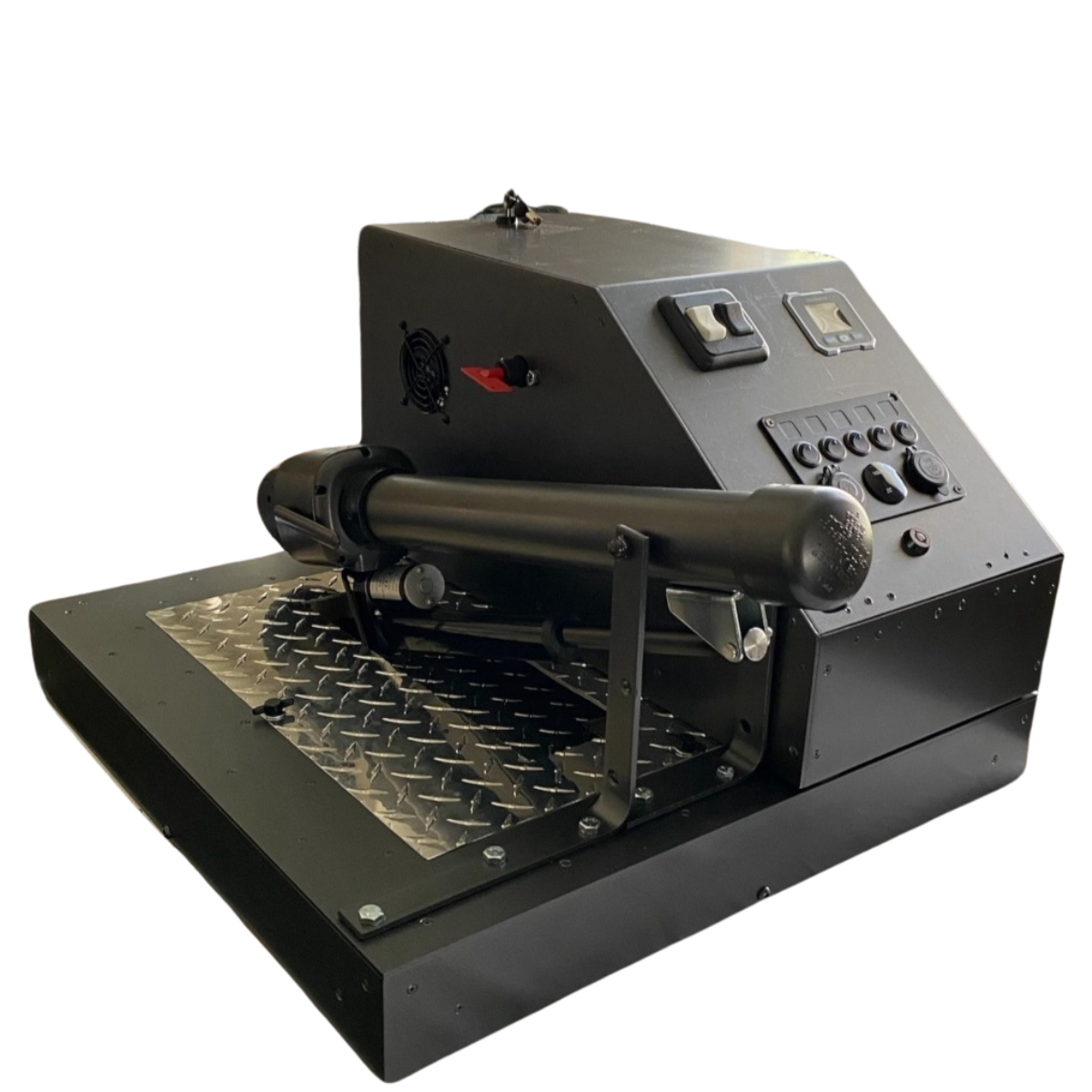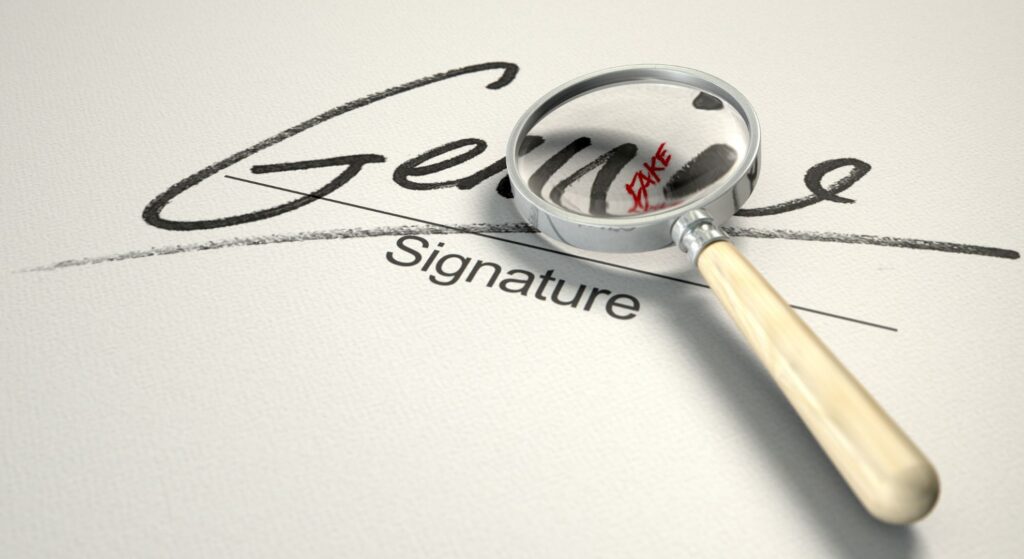Handwriting Analysis and Signature Examination Services
Signature Examination
Signatures are a frequent and automatic part of our writing habits, making them unique and highly personal. Because of their automatic nature, signatures require specialized analysis. Typically, multiple signature exemplars are collected for comparison with
questioned material. Questioned signatures often appear on contested wills, contracts, checks, artwork, manuscripts, and various other documents. Both visual and microscopical analysis is conducted on signatures to determine their authenticity.
Types of Signature Simulation:
- Imitation/Drawing from Memory: Recreating a signature from memory or imitating another model.
- Tracing: Directly tracing over a genuine signature.
- Scanning: Digitally scanning and reproducing a signature.
- Cutting and Pasting: Physically cutting and pasting a genuine signature onto another document.
Electronic and biometric signatures can also be examined through the recorded biometric digital file. In most cases, several comparison standards from around the same time period as the questioned signature need to be collected for accurate analysis.
Handwriting Examination
Handwriting analysis can involve various types of documents such as anonymous notes, threatening letters, handprinting, envelope addresses, graffiti, numerals, punctuation, secret codes, and symbols. Both cursive handwriting and handprinting can be analyzed,
as well as handwriting in different languages. Typically, cursive handwriting samples are compared with other cursive samples, and handprinted samples are compared with other handprinted samples.
Ink Examination
Ink examinations can include comparing inks on entries, detecting alterations or obliterations, and using microscopic examination to determine line sequences. Infrared technology can also be used to examine alterations or differences between ink samples. Chemical
analysis of ink, known as thin-layer chromatography, is sometimes utilized to differentiate between ink samples.
Paper Examination
Probate documents, such as wills, are often questioned for authenticity. These documents may be subject to forgery, simulated signatures, page substitutions, and alterations. Page substitutions can be detected by examining elements such as print processes,
paper types, and watermarks. Examination methods include visual processes like ultraviolet light, measuring paper thickness with a micrometer, and chemical testing to differentiate between paper samples.
To examine indentations on paper, an electrostatic detection device (EDD) is used to develop indentations that are written through several pages of paper.
Print Process Examination
Print process examinations involve identifying technologies such as inkjet, laser, photocopying, digital outputs, offset printing, engraving, typewriting, and other print technologies. These examinations typically involve microscopy and are used in cases involving
page substitution, manufactured documents, forged official documents, art and manuscript authentication, and counterfeiting.
Alteration Detection
Original documents are crucial for accurate analysis as photocopies do not reproduce all elements of handwriting and are subject to alteration. Examinations can include methods like infrared and ultraviolet light, microscopy, transmitted light, oblique light,
and electrostatic detection apparatus.
Reporting Results
At the conclusion of the examination, results are verbally provided to the client before preparing a written report. Written reports and demonstrative exhibits are available upon request.
Levels of Opinion
Levels of opinion are based on the Scientific Working Group for Forensic Document Examination (SWGDOC) Standard Terminology for Expressing Conclusions of Forensic Document Examiners. SWGDOC provides a nine-level scale for expressing conclusions:
- Identification
- Strong probability
- Probable
- Indications
- No conclusion
- Indications did not
- Probably did not
- Strong probability did not
- Elimination
Unmanned Surveillance can Assist with All of your Surveillance Needs
Get the Proof You Need and Discover the Truth. Gain Peace of Mind Now!
General Question
Our unmanned vehicles are equipped with high-definition cameras and advanced analytics software. They can be deployed to various locations and operated remotely to capture and analyze data in real-time.
We offer a wide range of investigative services, including insurance fraud, domestic investigations, infidelity and cheating spouse cases, child custody investigations, cohabitation, skip trace and locating missing persons, asset search, civil investigations, corporate investigations, criminal investigations, and cold case investigations.
Our cameras come with integrated cooling systems to prevent overheating and can operate autonomously for extended periods, with battery life ranging from 5 days to 3 weeks. This ensures continuous monitoring even in extreme conditions.
Unmanned vehicles provide discreet and continuous surveillance, reducing the need for human presence and the risk of detection. They are also more cost-effective and flexible, allowing for deployment in various environments.
Yes, our systems are equipped with real-time viewing capabilities accessible via iPad or other devices, allowing you to monitor activities as they happen.
We use encrypted data transmission and storage methods to protect the integrity and confidentiality of the information collected. Our systems are compliant with relevant data protection regulations.
We provide our services across various regions, focusing on both residential and commercial properties. Specific coverage areas can be discussed during consultation.
Contact us via phone or email to discuss your needs. We will arrange a consultation to understand your requirements and develop a tailored surveillance plan.
Our innovative approach, state-of-the-art technology, and commitment to excellence set us apart. We offer reliable, efficient, and scalable surveillance solutions designed to meet the unique needs of each client.



